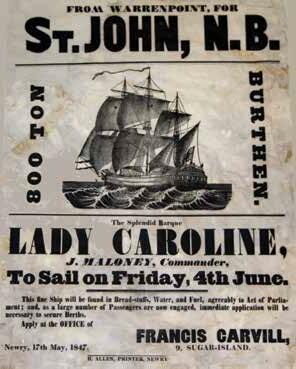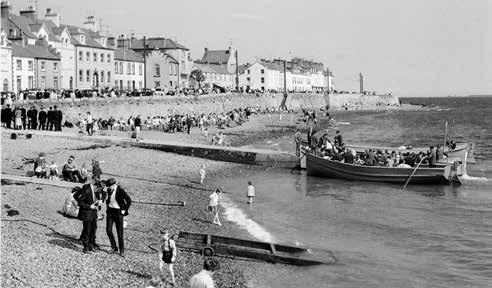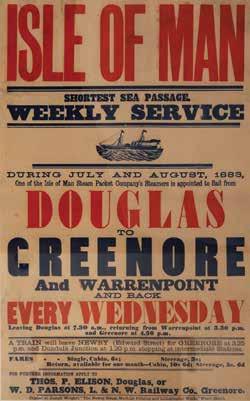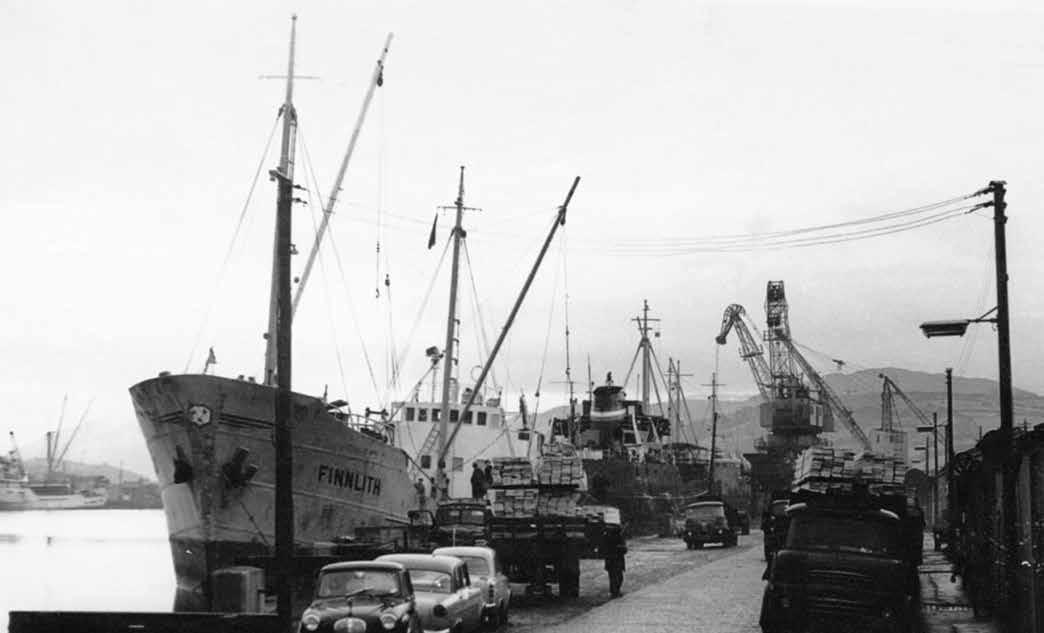
3 minute read
The modern Port of Newry
Commercial success in Newry attracted investment in transport systems including improvements to the canals, and the first railway in the area which opened in 1849. This in turn helped local industries to expand further. Newry also became an important exit point for emigrants, particularly in the years after the Great Famine.
The improvements in infrastructure sparked a trading boom at the Albert Basin and local ship owning companies were established. One of the best known was Joseph Fisher and Sons Ltd, who became one of the most significant shipping owners on the Irish Sea.
Advertisement
Coal was by far the most important import carried by the ships, being a primary fuel for local industries and households. Exports were low compared to imports, and included cattle, timber, herrings, Mourne granite and potatoes.
Poster
Newry and Mourne Museum Collection This poster advertises the sailing of the Lady Caroline from Warrenpoint to New Brunswick in Canada. Local merchants such as Francis Carvill also acted as emigration agents. In the first half of the 20th century Joseph Fisher and Sons Ltd were trading with most of the major ports in Britain and Ireland and the north coast of France. During the First and Second World Wars trade continued out of Newry, despite the risks from submarine and aerial attack. However, from the mid 1950s onwards, economic conditions and patterns in ship owning and trade became more competitive.
The port of Newry could not accommodate large ocean-going vessels and the decision was made to phase out Newry port and improve the port facilities at Warrenpoint. Joseph Fisher and Sons Ltd. was sold to Cawood Holdings in 1966. The ship canal was closed in 1974 and Newry’s trade transferred to the modern port of Warrenpoint. The ship canal has recently reopened to leisure boats, and ships now sail through the locks where they moor at the Albert Basin.
Smaller ports also developed along the coastline of southeast County Down. In the Mournes, Kilkeel and Annalong were important for exporting granite and for the fishing industry. Kilkeel was also a centre for boat building. On Carlingford Lough, Warrenpoint, Rostrevor and Omeath became popular holiday resorts.

Warrenpoint c.1965
© William McAlpine Warrenpoint, Rostrevor and Omeath, on the shores of Carlingford Lough, became popular holiday resorts. People from all over Ireland flocked to the seaside. Among the attractions were seabathing, skating and walking in the forest parks. This picture shows a boat which ferried visitors between Warrenpoint and Omeath.
Classroom Activities
1. Joseph Fisher and Sons Ltd and other shipping companies used flags to identify their ships and to send signals. Ask your class to use the internet to find out more about signal flags and get them to design their own individual flag.
2. From the late 19th century to the 1960s the Carlingford Lough area was a popular tourist destination.
Explore the many attractions of the area. Discuss with the class what they expect to do on holiday today.
Compare and contrast then and now.
3. Why do you think the Port of Newry declined in the 20th century?
The Port of Newry, 1960s
Courtesy of John Matthews The 1950s and 1960s saw large sea going vessels using the Port of Newry. Timber is pictured here being unloaded from a Scandinavian ship in the 1960s. The Port was still busy at this time but the limitations of the Newry Ship Canal meant that larger ships could not come to Newry and the docks closed in 1974.
Railway poster

Newry and Mourne Museum Collection A port was constructed at Greenore on the north coast of County Louth in the 1860s to provide a link by sea with Heysham and Liverpool. The opening of the Dundalk, Newry and Greenore Railway in 1873 meant that Greenore became an important passenger terminus for people travelling to Britain. The Isle of Man became a popular holiday destination in the late 19th century.








